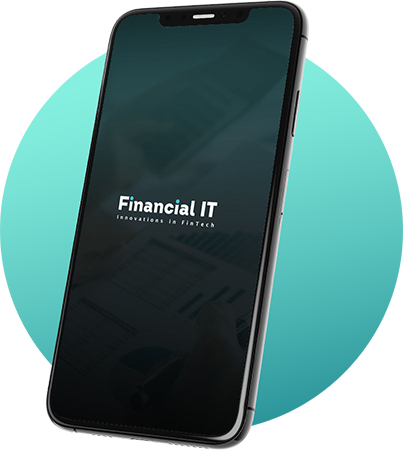Published
- 09:00 am
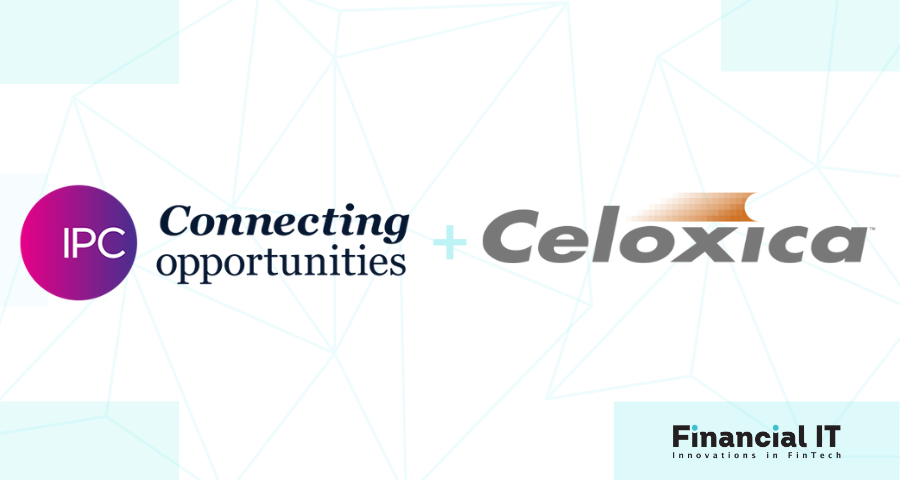
IPC is pleased to announce an industry collaboration that brings together Celoxica’s Market Access Gateway with IPC’s Connexus platform to deliver a hosted, fully managed colocation solution to a Tier 1 Investment Bank in Taiwan, for enhanced Direct Market Access (DMA) and pre-trade risk management.
IPC is providing fully managed hosting services in the CHT data centre, underpinned by Connexus Colocation, Connectivity and Chrono services, to deliver more efficient market access to - and lower latency trading in - Taiwanese financial markets. This solution is further enhanced with seamless integration with Celoxica’s Market Access Gateway (MAG) platform that supports trading multiple asset classes, with comprehensive pre-trade risk management and assured ultra-low latency performance, regardless of trading volumes and market volatility. Further, the Investment Bank benefits from cost efficiencies through replacing capital expenditure with an operational expenditure service model.
John Owens, Director of Global Exchange Relationship Management, IPC Systems, said, “We are pleased to have the opportunity to collaborate with Celoxica on a fully managed, ultra-low latency market connectivity and pre-trade risk management trading solution that supports our customer’s speed to market with respect to exchange, broker and client connectivity.”
Ben Tyas, Head of Asia region for Celoxica, commented, “Partnering with IPC allows us to continue building our presence in the Asia Pacific region and offer both local and global customers a fully managed service leveraging our ultra-low latency product suite for market data, trading and risk checks.”
Related News
- 02:00 am
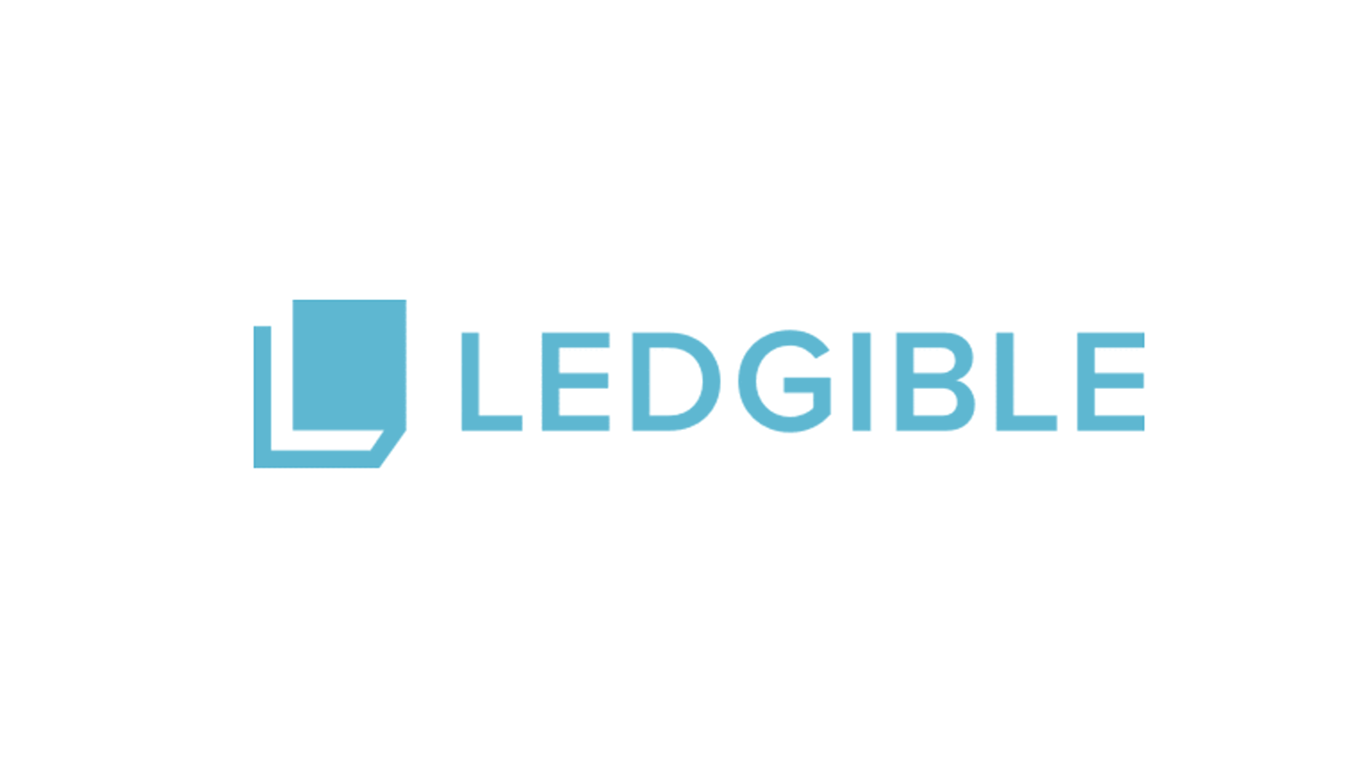
The crypto and digital assets industry has received the long awaited proposed regulations seeking regulatory clarity and improving taxpayer compliance. Yet regulatory clarity hasn’t quite been reached in some areas, especially for decentralized players and the emerging real-world asset tokenization industry. But there is still work to be done as the US Treasury Department and IRS seek industry feedback on uncertain areas, weighing the benefits of reducing the tax gap with the increased compliance burden on a growing industry.
By: Jessalyn Dean, VP of Tax Information Reporting at Ledgible
Gabriel Brin, VP of Tax and Accounting Product at Ledgible
Key Highlights
- Timeline: The IRS has adopted a phased-in approach to different components, with gross proceeds reporting coming first, cost basis reporting coming second, and cost basis transfers reporting coming third. In the second phase with basis reporting, only custodial brokers that held the asset from original acquisition through to its sale will be required to report cost basis. This significantly limits the amount of cost basis reporting in the first years of implementation.
- Broker Definition: In most cases, the IRS has reduced the scope of the definition from the original proposal in the US Infrastructure Act. In broadening the definition, they have expanded what it means to “effect a sale” which goes outside of the traditional view of brokers in the financial services industry. As such, miners, validators, staking pool operators, and those not operating a trade or business will typically be out of scope while decentralized exchanges and DAOs could be in scope if they have control or influence over the protocol to make changes to it. As expected, centralized exchanges remain in scope as a broker.
- Digital Asset Definition: In scope are crypto currencies, NFTs, stablecoins, tokenized real estate, tokenized securities, and commodities overseen by the CFTC (even if not approved by them). Out of scope are closed loop tokens used in video games, tokenized inventories, and CBDCs.
- Wash Sales: Though the IRS gave no commentary on this topic in the Background of the proposed regulations, the proposed edits to the regulations show that digital assets will be out of scope (for now) of wash sale loss adjustments reporting. The lack of commentary leaves open the possibility of future intentions to add wash sale rules for digital assets.
- Transfers and Organizational Actions: 6045A guidance for reporting of digital asset transfers and 6045B guidance for reporting of organizational actions are delayed, but no deferral date was provided.
Additional Key Highlights for Tokenization
- Tokenized Securities: Recognizing that tokenized securities could be reportable on both a Form 1099-B as a traditional security and Form 1099-DA as a digital asset, the IRS proposed that these sales would only be reportable on a Form 1099-DA and removes duplicate reporting. This could have deep effects on the decades-old existing reporting infrastructure of regulated mutual funds that are being tokenized onto the blockchain to modernize transfer agent record keeping.
- Tokenized Real Estate: Similar to tokenized securities, the IRS proposes these are sales of digital assets and reportable on a Form 1099-DA. However a coordinating rule was added so that sales of tokenized real estate that are reportable on a Form 1099-S should remain as such and not double reported on a Form 1099-DA. The IRS was silent in addressing the more typical use case of Schedule K-1 reporting that results from LLC and partnership structures thereby leaving open the possibility of duplicate reporting on Form 1099-DA for such cases.
- Tokenized Commodities: Digital assets sales that are both commodities reportable on a Form 1099-B and a digital asset reportable on Form 1099-DA will only be reportable on a Form 1099-DA to remove duplicate reporting.
“The 282 pages of new regulations released on 8/25/23, about 6 months after OIRA review was complete, show that Treasury and IRS have given a lot of thought to these new regulations. The IRS and Treasury also hint at expecting several comments on these regulations. They have scheduled a public hearing for November 7th, and also state that a second public hearing could be held on November 8th. In addition to the possible two days’ worth of public hearings, they explicitly ask for feedback on 51 specific questions. Particularly interesting is that, despite the regs being 282 pages long, there are still areas where more guidance is needed. For example, how will decentralized exchanges comply with the new regs if they are unable to obtain taxpayer identification numbers?” said Nik Fahrer, Senior Manager at FORVIS in response to the proposed regulations. Fahrer is a member of the Virtual Currency Task Force of the AICPA and participates in the Wall Street Blockchain Alliance. FORVIS ranks among the top 10 public accounting firms in the United States.
Background
Digital asset tax reporting was first proposed in H.R. 3684 - Infrastructure Investment and Jobs Act in 2021. Prior to this, the financial services industry had a multi-decades long compliance framework for the tax reporting of payments of income and sales of certain financial assets. While some disagreement existed as to whether this existing framework covered crypto and other digital assets, there was a general consensus in the industry that this framework did not provide for enough clarity to ensure consistent application amongst all players that could be in scope of its requirements. Additionally, innovation in the digital assets industry created new providers that were uncertain if they were even in scope at all of this existing framework. Now we have received the proposed regulations on implementing the tax reporting of the sales of digital assets, including the reporting of proceeds of those sales and the cost basis of the sold asset amongst other details. The primary objective of these proposed tax reporting regulations is to close the so-called “tax gap”, which is the difference between tax revenue expected (by the US government) and tax revenue received (through taxpayer compliance). The secondary objective of these proposed tax reporting regulations is to relieve the compliance burden currently resting on the shoulders of the individual taxpayer themselves, who frequently have to pay for the help of tax advisors or crypto tax compliance software in order to properly calculate their taxes.
Next we will take a deep dive into some key specifics of the proposed regulations.
Key Dates
Note this timeline is not inclusive of every possible date. It is instead just the highlights.
The Fine Print on Crypto and NFTs
Definition of Broker
In the original US Infrastructure Act, a broker was very widely defined as “any person who (for consideration) is responsible for regularly providing any service effectuating transfers of digital assets on behalf of another person.” Under the proposed regulations, it now reads as “any person … U.S. or foreign, that, in the ordinary course of a trade or business during the calendar year, stands ready to effect sales to be made by others.”
The IRS has reduced the scope of this definition by reducing “transfers” to “sales” and reducing “for consideration” to “in the ordinary course of a trade or business”. The IRS has increased the scope by more precisely defining the word “effect sales” which includes providing a party in the sale with access to an automatically executing contract or protocol, providing access to digital asset trading platforms, providing an automated market maker system, providing order matching services, providing market making functions, providing services to discover the most competitive buy and sell prices, or providing escrow or escrow-like services to ensure both parties to an exchange act in accordance with their obligations.
These scope adjustments have the resulting effect of bringing certain stablecoin issuers, initial coin offering (or ICO) issuers, decentralized services, decentralized exchanges, and DAOs into the definition of broker where persons have the ability to control or modify the smart contracts. These scope adjustments eliminate most miners, network validators, many staking pool operators, wallet key custodians, and people that participate in blockchain activity as a hobby or community interest.
A few other notes of interest:
- Though certain decentralized providers could be in scope of the definition of broker, their reporting obligations would exclude the reporting of cost basis information in the case that they are non-custodial services.
- While certain providers are now outside of the scope of Form 1099-DA broker reporting for sales of digital assets, they would still need to assess if they could have other Form 1099 reporting obligations under other Internal Revenue Code sections (such as IRC 6041 for Form 1099-MISC and NEC reporting).
- Brokers can be US or non-US though the requirements that apply to each of them are different. Digital asset providers that might consider shipping their services offshore of the US would still be in scope of broker reporting if they offer their services to US Persons. This is not any different than existing broker reporting for traditional securities though the IRS has updated certain definitions to reflect an industry that typically has no fixed offices from which they execute their services. This also reflects the approach taken by the European Union in drafting the DAC8 which aims to create a tax reporting infrastructure for crypto and digital assets within EU Member States.
“The Treasury and IRS go on to estimate that these new broker reporting rules will impact approximately 600 to 9,500 brokers and cite CoinMarketCap.com as a source. There is still a lot of ambiguity in who the broker reporting rules will be applicable to, especially for decentralized exchanges. As currently written, it seems that almost all decentralized exchanges will have to comply with these new broker reporting requirements if they have U.S. customers. On the plus side, the new regs do make it clear that these new broker reporting requirements are not applicable to miners, stakers and validators.” said Nik Fahrer, Senior Manager at FORVIS in response to the proposed regulations.
Payee Documentation
The requirements on how to document payees (similar to KYC and AML procedures) are not significantly different than the existing rules for traditional financial institutions but it is worth mentioning for the digital asset native industry:
- A reverse lookup of a customer’s tax identification number (TIN) from identity verification databases or only storing the last 4 digits of their TIN is insufficient for the purpose of US Form 1099 reporting. Brokers will be required to collect a so-called “certified TIN” which means obtaining a signed IRS Form W-9 with a complete 9 digit TIN (or adequate substitute online form as allowed by the IRS).
- The proposed regulations provide clarity on what non-US (foreign) brokers need to do in order to prove they are not doing business with US Persons and in case they are, what withholding and reporting obligations would apply to them.
Tax withholding
These requirements are largely not discussed in the commentary of the proposed regulations as the IRS sees the existing framework as sufficient to address digital assets. What is notably absent is how a non-custodial provider, like a decentralized exchange, would be able to perform tax withholding (also called backup withholding) in the absence of possession or control of any customer assets. More guidance will be needed from the IRS on how a decentralized exchange could comply with tax withholding obligations such as where a certified TIN has not been obtained from the customer, and what penalty relief may be available to them in the case that they cannot.
Sales of Digital Assets
- Hard forks and airdrops are not considered a sale of a digital asset.
- A disposition of a digital asset to pay digital asset transaction fees is considered a sale of a digital asset in exchange for services.
- IRS provides guidance on reasonable valuation methods for hard to value assets and the consequences of being unable to obtain such reasonable valuation.
- IRS did not provide proposed guidance on whether transfers of digital assets in and out of liquidity pools or wrapping and unwrapping of assets are considered sales of digital assets and instead have requested comments from the industry on a path forward.
Cost Basis
While the calculation of basis remains largely the same conceptually as other assets, the proposed regulations address a few key points including how to adjust basis for digital asset transaction costs (e.g. gas fees), wash sale adjustments, ordering rules for disposing of assets, and when cost basis reporting is not required by a broker.
- Initial cost basis of a digital asset includes the amount paid by the customer increased by any commissions, transfer taxes, or digital asset transaction costs related to its acquisition. For most sales, these adjustments will reduce the proceeds on the sale.
- An exception is made where one digital asset is exchanged for a materially different digital asset. In this case, half of the digital asset transaction costs are allocated to the sale side and half of the digital asset transaction costs are allocated to the acquisition side. As this is not common practice today, the taxpayers and software developers will have to make adjustments to account for this new adjustment to basis tracking.
- The ordering rules for disposals of tax lots indicates that specific identification of tax lots by the taxpayer should be made no later than the date and time of the sale with the broker. In the absence of a specific identification of tax lots by the taxpayer, the broker must dispose of the earliest units first of either acquired within or transferred-in assets. For this purpose, and until 6045A transfer reporting is implemented, the date used for determining the earliest lots of transferred-in assets is the date and time of the transfer-in, and not the actual acquisition date and time (even if the broker has it).
- Digital assets will be out of scope of wash sale loss adjustments reporting. This is consistent with common practice today.
- A safe harbor for brokers where de minimis errors are made in cost basis reporting will be added later.
- In the first wave of basis reporting, brokers only report cost basis if the asset was acquired, held until sale, and then sold by that same custodial broker for the benefit of the customer.
- As decentralized exchanges and DAOs do not offer hosted wallets, they will not be in scope of cost basis reporting though they will still be in scope of proceeds reporting (if they meet the criteria to be a broker).
Form 1099 Reporting
Here is the list of information that will be reported on IRS Form 1099-DA, with no de minimis reporting threshold offered by the proposed regulations:
- Customer’s name, address, and TIN;
- Name or type of the digital asset sold and the number of units sold;
- Sale date and time in UTC;
- Gross proceeds of the sale;
- Transaction ID or hash associated with the sale, if any;
- Whether the consideration received was cash, different digital assets, other property, or services;
- Other items not listed that may apply where a digital asset sale is also a sale of securities;
- Sometimes - where cost basis reporting is required:
- Acquisition date and time of the asset in UTC;
- Adjusted cost basis of the asset sold;
- Long term or short term character of the sale;
- Sometimes - where cost basis reporting is not required for transferred-in assets prior to 6045A guidance:
- Date and time of transfer-in transaction;
- Transaction ID or hash of transfer-in transaction;
- Digital asset address(es) from which the transferred-in digital asset was transferred;
- Number of units transferred in by the customer as part of that transfer-in transaction.
Traditional securities reporting has the concept of exempt payees for which a broker is not required to issue a Form 1099. This exempt payees list for securities is the same for digital assets. An exempt payee was not added for payments to other “Digital asset brokers”. This means that where multiple tiers of brokers are involved in a payment flow that unnecessary duplicate reporting can occur.
Third Party Settlement Organizations (“TPSOs”) under Form 1099-K reporting can also be brokers for digital assets. In this regard, a payment processor can be a “digital asset payment processor” under the proposed regulations for Form 1099-DA with respect to the purchaser of a good or service and a TPSO for Form 1099-K with respect to the seller/merchant. In this case, though the TPSO is processing digital payments it will not report payments to the seller/merchant on a Form 1099-DA to avoid duplicate reporting. Further complexity arises in the proposed regulations around NFTs as these arrive in the definition of a digital asset and are also considered a “good or service” under TPSO reporting regulations. NFTs can therefore be reportable on a Form 1099-K when traded using certain brokers.
The Fine Print on Tokenized Securities, Real Estate, and Other Financial Products
- Recognizing that tokenized securities could be reportable on both a Form 1099-B as a traditional security and Form 1099-DA as a digital asset, the IRS proposed that these sales would only be reportable on a Form 1099-DA and removes duplicate reporting on the Form 1099-B. Many token issuers active in this space are SEC regulated mutual funds. As such, the proposed regulations create more questions than answers such as whether these mutual funds would continue to be subject to wash sale reporting rules since sales of digital assets are not in scope of wash sale rules, and whether accounting for proper adjustments to cost basis is allowed such as return of capital. While it is expected that the IRS did not intend for these securities to suddenly fall out of wash sale reporting rules, clarity in the final regulations would be prudent to avoid misinterpretations.
- For tokenized real estate that is held in an LLC or partnership structure, investors will receive both a Form 1099-DA for the sale of the token in addition to a Schedule K-1 from the LLC or partnership for the same transaction. The proposed regulations did not address this use case of tokenized real estate and were therefore silent as to how adjusted cost basis would be calculated in this case, whether it would follow basic digital asset principals or the actual underlying economic reality of the LLC or partnership holding the real estate.
- Sales of non-tokenized real estate (i.e. real estate that is not a digital asset) are still subject to existing Form 1099-S reporting rules for payments made to the seller. Proposed regulations will require Form 1099-DA reporting where the buyer pays with digital assets.
- For commodities, the definitions for purposes of reporting under 6045 will be modified to include new language for self-certified CFTC commodities, adding to the existing definition of approved CFTC commodities. This will bring into scope of Form 1099-DA any digital asset commodities that were otherwise not CFTC approved.
- Where certain financial contracts (e.g. options and forward contracts) are not themselves a digital asset because they are not recorded on a cryptographically secured distributed ledger or any similar technology, then they are covered securities subject to mandatory basis reporting even if they reference a digital asset that is not held by the broker in a hosted wallet.
Reactions from Ledgible Experts
The US Treasury and IRS have demonstrated their extensive knowledge of the crypto, digital assets, and blockchain industry with the publication of the proposed regulations.
Tokenized Real-World Assets
In their most basic form, tokenized assets are simply digital receipts for something else. Yet the IRS is proposing to create tax reporting on the sales of these digital receipts, rather than looking through to the underlying asset for the appropriate tax reporting to apply. This could lead to interpretations of the proposed regulations that cost basis rules of digital assets should apply rather than the more appropriate cost basis rules for the underlying asset of value. Without clarifying commentary from the IRS on this point, inconsistent basis rules for taxpayers could result, depending on if the underlying asset was sold with a token for a receipt or a piece of paper for a receipt.
The impact to the tokenized securities industry would be significant. Many use cases in tokenized securities today are SEC regulated mutual funds which are already required to report their distribution payments on either Forms 1099-DIV or 1099-INT and sales of the funds on Form 1099-B. Most of these tokenized use cases are closed loop in a way, well known traditional financial institutions that are modernizing their transfer agent record keeping without any intention of offering other digital assets like crypto currencies for sale on their platform. As such, they would be well suited to continue reporting these sales of tokenized mutual funds on Forms 1099-B rather than completely reworking them to report on a new Form 1099-DA. Given the highly regulated nature of these mutual funds, one can find little reason for such distrust of the existing reporting infrastructure. Input from the tokenization industry and traditional financial institutions operating in this space should help the IRS to draft more appropriate coordination of rules to address their concerns around reporting holes that may exist in the future when taxpayers are potentially able to withdraw these tokenized securities to their private wallets.
The proposed regulations also attempt to address tokenized real estate but seem to miss the mark in understanding how most tokenized real estate is issued today. The majority of tokenized real estate still requires an entity to hold title to the real estate. This means that the token really represents an interest in what is typically an LLC or partnership structure. The proposed regulations did not contemplate this use case and therefore offer no coordinating rules to eliminate duplicate reporting that would result from a Form 1099-DA being issued on the sale of the tokenized real estate and the Schedule K-1 being issued from the LLC or partnership during the annual IRS Form 1065 filing. In this case, the Schedule K-1 reporting would be far more appropriate to retain and exempt it from Form 1099-DA reporting. This is because the cost basis calculation and reporting on Schedule K-1 is far more complex and comprehensive than that offered by the Form 1099-DA proposed regulations and is therefore more suitable for enhancing taxpayer compliance.
Practical Issues of Decentralized Providers and Tax Withholding
The IRS uses tax withholding as a kind of stick to force taxpayers to provide their complete and accurate TIN to brokers. Where a taxpayer refuses to provide or certify their TIN, then the broker begins tax withholding of 24% on payments such as proceeds on the sale of a reportable asset. This tax withholding, also called backup withholding, can then incentivize the taxpayer to comply with TIN requests from the broker. Additionally, where the broker cannot obtain a valid TIN from their customer then they are viewed as being compliant with the tax withholding and reporting laws by performing the backup withholding. They are not required to close the account of the customer so long as they take and remit the backup withholding. But in the case of decentralized exchanges (“DEXs”), as example, the proposed regulations suggest that so long as they have control or influence over the protocol to make changes to it then they are in scope of Form 1099-DA reporting and are therefore required to obtain a certified TIN from their customers. Though the IRS recognizes that these DEXs do not host the wallets and therefore do not have custody of the digital assets, they do not offer any coordinating guidance that acknowledges that such DEX would therefore not be in any position to withhold tax on any payments from their customers that refuse to comply with certified TIN requests. Without any viable stick, like tax withholding, for the DEX to force the hand of its customers to give them a certified TIN, then many customers of these DEXs will simply ignore the requests for their TIN. The DEX will then have mostly missing TINs in their Form 1099-DA reporting to submit to the IRS and without any guidance on penalty relief. The costs to the DEX (and the digital asset industry) of potentially alienating their customer base from doing business with them far outweigh the benefits of the low quality Forms 1099-DA reporting that will be received by the IRS. This missing guidance must be addressed in the final regulations.
Time Zones and 24/7 Nature of Crypto
It is interesting to observe in the commentary to the proposed regulations that the IRS recognizes the 24/7 nature of crypto and digital assets and therefore has given clear guidance that UTC is the proposed time zone for reporting purposes. This means that if Taxpayer A sells Asset B at 10pm Eastern on December 31 Year 1 which is 3am UTC on January 1 Year 2, then the broker must report the sale on a Year 2 Form 1099-DA. However this will require taxpayers to receive guidance for their own personal tax return filing (e.g. IRS Form 8949) in order to reconcile reporting and paying taxes on the sale in Year 1 in their Form 8949 but receiving a Form 1099-DA in the following Year 2 for that sale.
Also missing is guidance on how brokers need to interpret the timely tax deposit rules when backup withholding is taken from sales proceeds. At what time does a “day” cutoff for purposes of determining when the deposit must be made by?
Cost Basis and Wash Sales
The delay of 6045A transfer reporting means that taxpayers that move their crypto to self-hosted wallets or between different brokers (e.g. different centralized exchanges hosting their digital assets) will lose any basis reporting when they sell it in the future. This means that in the first years of Form 1099-DA reporting, only taxpayers that buy, hold, and sell all of their crypto on a single exchange will receive the full benefits of Form 1099 reporting.
Though the IRS gave no commentary on the topic of wash sales in the Background of the proposed regulations, the proposed edits to the regulations show that digital assets will be out of scope (for now) of wash sale loss adjustments reporting. The lack of commentary leaves open the possibility of future intentions to add wash sale rules for digital assets. We believe that the IRS needs to address this intention head on in the commentary to the final regulations. Brokers need time to prepare and build for their future obligations. They may make different decisions early on when they have a more clear picture of what’s coming ahead.
State 1099 Reporting
We are anticipating how the different States react to the proposed regulations and if they will conform to or deviate from any IRS definitions and requirements. It should be expected that at least some States will request their own filing of Form 1099-DA type reporting that may need to be filed separately from any combined Federal/State filing program.
How Brokers Can Prepare
- Form an internal steering committee and join industry working groups.
- Determine who owns the tax reporting function, KPIs, and budget: Operations, Compliance, Tax, or someone else?
- Recruit and hire the right people (employees vs consultants), considering using an outsourced managed services model or building the knowledge in-house.
- Develop and coordinate training in your organization, with a focus on customer service agents addressing tax questions for geographically diverse customers.
- Analyze and decide build vs buy.
- Consider voluntary reporting in advance of mandatory reporting timelines where customer demands require it or as proof of concept.
- Begin collecting certified TINs or certifications of foreign status from all new customers, and make a plan for documenting existing customers.
- Track and store customer lot level transaction data.
- Build a user interface for customers to select which lots they want to sell.
- Track asset transfer-in data.
- Build tax withholding calculation, conversion, and remittance systems to ensure timely deposits to the IRS.
- Analyze, filter, generate, file, and distribute Forms 1099 to the IRS, payees, and State Revenue agencies.
- Develop an IRS and State Revenue agency governance model to address IRS and State notices.
Make Your Voice Heard
Treasury and the IRS seek industry input into the proposed regulations and the open topics that they have yet to address. We encourage the industry to participate, either by submitting your own comment letters to the IRS or by collaborating with industry working groups to submit joint feedback.
- Beginning on page 137 of the PDF of the commentary and proposed regulations you can find the list of 51 questions on which the IRS seeks specific feedback. Written comments are due by October 28, 2023. Instructions for submitting written comments can be found on page 169.
- A public hearing is scheduled for November 7, 2023 at 10am Eastern Time in Washington DC. Requests to attend and to testify must be submitted to the IRS in writing and instructions for these requests are found beginning on page 169 of the PDF. An overflow day is also scheduled for November 8, 2023 if demand exceeds capacity for November 7, 2023.
Who is Ledgible, How Can We Help
Ledgible has developed a network of partnerships with other software providers in order to assist you in developing your customized fit-for-purpose tax reporting operating model. We customize our cost-basis tracking and reporting solution to fit your unique needs. Integration with our partners ensures your compliance needs are covered in customer onboarding, tax withholding calculations, and annual reporting.
Related News
- 07:00 am
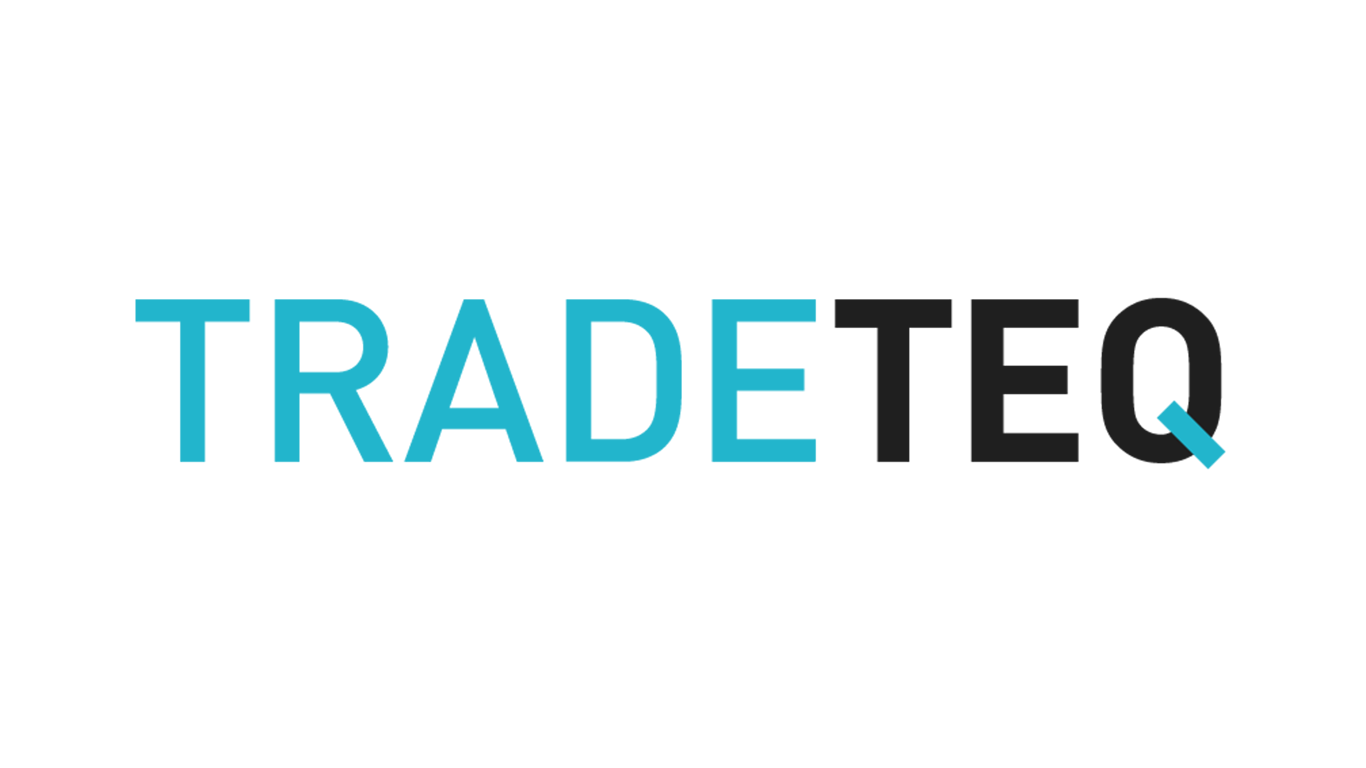
Tradeteq, the marketplace for private credit and real assets and provider of securitization-as-a-service, today announced the ability for accredited investors to get access to a multibillion-dollar exchange-traded U.S. Treasury Yield fund (USTY). USTY will be tokenized by digital asset leader Securitize on the XDC Network.
The new USTY token is significant because it expands low-cost access to the yield generated by an institutionally-managed U.S. Treasury ETF in a digitally-native format. Investors in the tokens will have exposure to U.S. Treasury securities with remaining maturities between zero and one year, allowing corporate treasurers, in particular, to optimize cash management strategies. The new token is open to accredited investors beginning today directly through Yieldteq.
Tradeteq has selected the XDC Network as its blockchain platform of choice to securely and efficiently distribute and record the ownership of fully-regulated, digitized financial products, and this is the first time XDC Network will be used by Securitize to tokenize digital asset securities.
USTY is one in a suite of tokenized securities set to be issued on the XDC Network – with Tradeteq serving as an engine providing end-to-end securitization services that allow trade originators to build liquidity pools through their own regulated, XDC Network-based tokens.
“Bringing USTY to the XDC Network establishes an unparalleled investment solution for both seasoned investors seeking portfolio diversification and newcomers looking for a stable investment opportunity,” said Nils Behling, Chief Operating Officer of Tradeteq. “USTY combines the flexibility and accessibility of cryptocurrencies with the stability of a U.S. Treasury ETF, creating an efficient and seamless investment experience. Our collaboration with XDC Foundation and Securitize and the use of the XDC Network aim to redefine traditional investment paradigms, offering investors a unique, low-risk, and cost-efficient opportunity to diversify their portfolios.”
XDC Network’s blockchain technology provides USTY with a secure and robust security framework and a solid platform on which financial instruments can be distributed in a scalable and accessible way. With its integration into Securitize’s digital asset securities platform, the XDC Network supports a comprehensive ecosystem for real world asset issuance and trading.
"Tradeteq’s launch of the USTY security token, and the integration of the XDC Network into Securitize’s digital securities protocol, together mark a significant milestone towards the issuance of real world assets on the XDC Network,” said Billy Sebell, Executive Director of XDC Foundation. “These efforts have now brought the promise of a secure, scalable trade finance solution on the XDC Network into reality and signify a major step forward in our vision of XDC being the trade network of choice in the blockchain space.”
USTY is a security tokenized in collaboration with Securitize, the leader in expanding investor and business access to digitized alternative investments, including products such as this, private equity, private credit, secondaries, venture capital, and equity in start-ups. Tokenization will occur through Securitize’s stock transfer agent service, through which it onboards investors, verifies their identities, issues shares, tracks share ownership, and manages actions such as shareholder communications and dividend payouts.
“Securitize is proud to have been selected by Tradeteq to issue and manage shares in its new U.S. Treasury Yield tokens, which is yet another step forward in the digitization and improvement of traditional financial products,” said Securitize co-founder and President Jamie Finn. “Securitize is also proud to announce our support for the XDC Network blockchain, which joins Avalanche and Polygon as a blockchain of choice for the digitization of new and traditional financial products.”
Related News
- 02:00 am
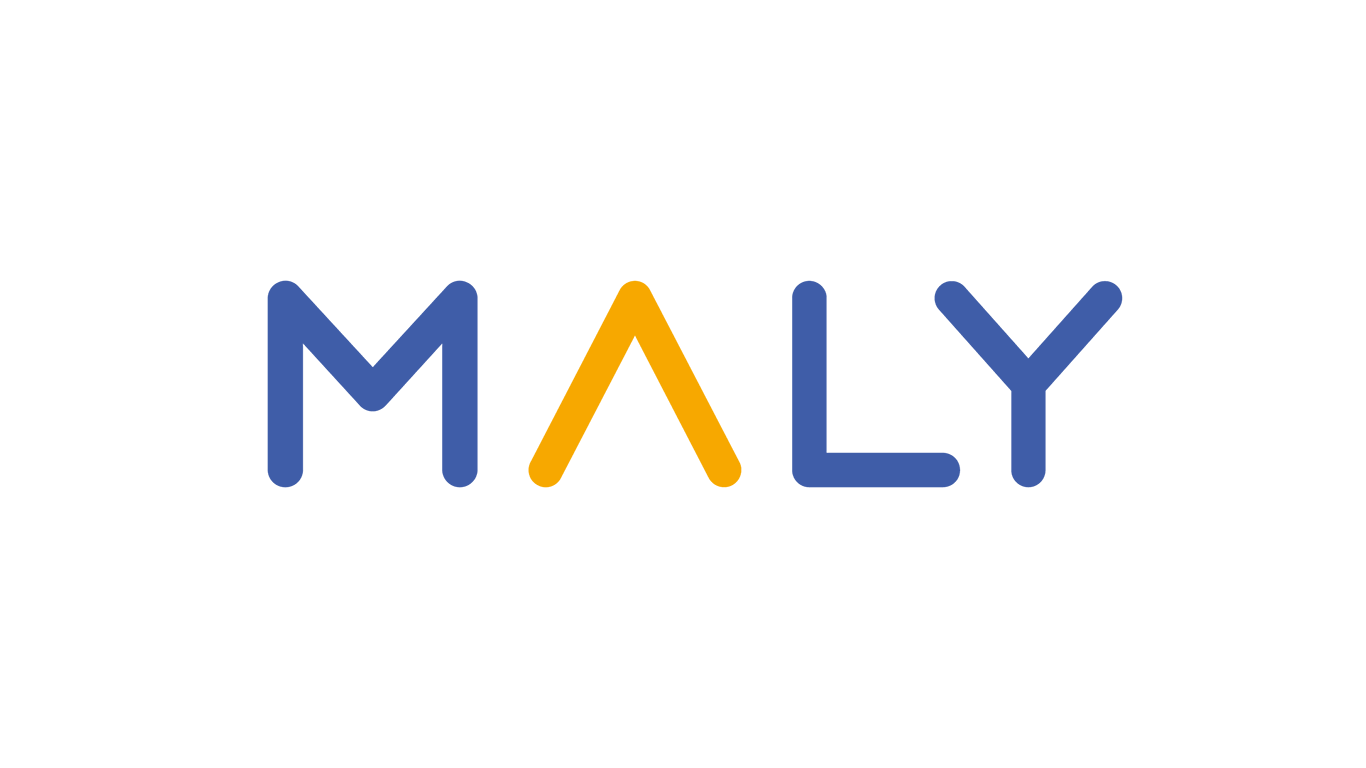
MALY, the Dubai-based financial wellness platform, has recently wrapped up its pre-seed funding round, amassing an impressive investment of over $1.6m to boost its automated savings app and associated bank-linked card.
The funds were secured from a consortium of renowned GCC-based angel investors, reflecting their belief in the start-up’s vision to reshape financial wellness in the UAE and broaden its reach to other regional markets.
There’s an evident surge in demand for financial tools that promote healthier saving and investment habits in the MENA region. This is particularly true given that roughly 60% of residents in MALY’s primary target markets, namely the UAE and KSA, lack a pension or savings plan.
Enter MALY – with its mission to bridge this substantial void. Offering an intuitive platform, MALY presents users with intelligent saving tools, debt management strategies, spending advice, and comprehensive investment plans, all designed to guide users towards achieving their financial aspirations and securing long-term stability.
The newly acquired pre-seed investment is earmarked for kickstarting MALY’s next growth trajectory, with a keen focus on harnessing cutting-edge AI technologies. This integration aims to provide data-driven bespoke recommendations, bolstering users’ financial wellness.
The platform has already garnered commendations from its beta-stage users. They are notably appreciative of its user-friendly interface, automated savings app, and the VISA card’s ability to integrate with all prominent UAE banks. This holistic integration permits users to save with ease by automatically adjusting minimal amounts from their everyday purchases through a micro-saving feature.
MALY Co-founder and CEO Mo Ibrahim said, “Our mission is simple yet profound: to make improving financial wellness accessible for individuals across the MENA region. The remarkable pre-seed funding we’ve received will enable MALY to kickstart its growth journey. It will enable us to scale efficiently by creating partnerships to reach new customers and drive platform development with enriched product features.”
Ibrahim further added, “At MALY, we see a unique opportunity to help people across MENA improve their financial wellness, and harnessing the power of AI will be a huge factor in this.
“Since inception, we’ve built in-house data engineering pipelines to embed machine learning into our platform. Aided by recent technological advances, we can now offer data-driven personalized recommendations to help our customers sustain a healthy relationship with their finances.”
While the recent pre-seed investment marks a significant milestone in MALY’s journey, the start-up, founded by an ensemble of seasoned entrepreneurs and a dynamic core team, has previously formed key alliances with prominent brands such as VISA, NymCard, and DAPI. These collaborations reflect MALY’s ambition to establish itself as a formidable force in the MENA financial wellness landscape.
Related News
- 03:00 am

VizyPay, a payment processing fintech that serves small businesses in rural America, announces its strategic partnership with Clear Lake Bank & Trust. Unified by a shared mission to uplift small businesses, this partnership will provide Clear Lake Bank & Trust customers access to VizyPay’s cost-effective and user-friendly payment technologies.
Through this relationship, Clear Lake Bank & Trust’s small business customers will be connected directly with VizyPay’s award-winning team. With personalized payment solutions and innovative technologies like VizyPOS and Cash Discount 2.0, VizyPay helps mom-and-pop shops that are often left behind or overcharged by other payment processors reduce payment processing fees and level up their businesses.
“As a locally owned bank for nearly 90 years, we’re dedicated to helping our small business community grow. Oftentimes these businesses not only serve as the economic backbone for their communities, but they also are a crucial part of our region’s cultural DNA,” said Clear Lake Bank & Trust Mike Bahnsen.
“The decision to partner with Clear Lake Bank & Trust was a no-brainer. The bank’s knowledge of the financial services to run a successful business is remarkable and paired with VizyPay’s programs, technology and support, we can provide the best options for small business owners of Northern Iowa,” said VizyPay CEO Austin Mac Nab.
Related News
- 08:00 am

DeepTarget Inc., a transformational financial services company that provides Growth-as-a-Service™ (GRaaS™) to community financial institutions, and Access Softek, an omnichannel digital banking provider, announced the five finalists and the grand prize winner in their Digital Impact 2023 Awards Program, honouring excellence in digital marketing.
The Digital Impact Award recognizes progressive financial institutions that invest in and utilize technology to communicate, engage and impact account holders’ financial journeys. The finalists were selected from a larger pool deploying DeepTarget’s Digital Experience Platform (DXP) within Access Softek digital banking channels to create unique and successful marketing campaigns within the last year. Finalists were selected based on a winning combination of factors including campaign creativity, use of business intelligence, data insights, AI and impactful results.
The well-deserved 2023 Digital Impact finalists are:
· Seaboard Federal Credit Union; Asset size $198 million; Money Market (MM) Rate and CD Rate Campaign: These campaigns were deployed to members signed up to either online or mobile banking. Those interested in learning more about the CD or MM rates were directed to open the accounts online making the process seamless. With an amazing clickthrough rate (CTR) over 10%, Money Market accounts increased 35% in value as a result of the campaign. A sister campaign promoting CDs resulting in a great uptake as well. Both campaigns combined have originated over $7 million in new account deposits so far!
· TrueCore Federal Credit Union; Asset size over $230 Million; ReferLive Campaign: The ReferLive $50/$50 campaign deployed in online and mobile banking was to reach their annual new membership goal. It rewarded both current, referring members and potential new members. It was a highly successful campaign with a CTR of over 11%, generating more than 1,200 leads in just 6 months. With its help, TrueCore is ahead of their annual target with 758 new members YTD.
· Michigan Schools and Government Credit Union; Asset size $3.3 billion; 3 Mortgage Campaigns from Feb to July 2023: These three online and mobile campaigns promoted a rate lock, low closing costs and zero down, all working in concert to raise awareness of the benefits of their mortgage offering. So far, they have resulted in a robust number of new mortgages – 277 and counting!
· Crane Credit Union; Asset size $1 billion; Auto Loan using Predictive Model Campaign: The campaign’s main goal was to catch members’ attention with an incredibly low auto loan rate of 4.74% APR and encourage them to open auto loans. DeepTarget’s AI/ML based predictive model campaign identified those with the highest propensity for auto loans, resulting in a high CTR. By the end of this campaign in March 2023, Crane had closed more than 1,300 auto loans.
· Great Lakes Credit Union; Asset size $1.3 billion; Save to Win Campaign: The objective was to encourage members who are not experienced savers to save with a minimum opening deposit of just $25. Their incentive was to win up to $5,000 in cash by opening a “Save To Win” 12-month certificate. What a successful campaign it was in a short span of a mere four months! It had a CTR of over 8%, well over 2,200 leads and influenced the opening of 1,348 new share certificates!
These five winning campaigns were showcased in the Digital Impact Spotlight session during the Access Softek Client Conference held in Chicago, Illinois. As long-time users of DeepTarget, they demonstrated the highly effective use of digital touchpoints to engage their members and meet their individual needs at the right time.
Conference attendees voted in real-time to select the 2023 Digital Impact grand prize winner from the finalist presentations to be Great Lakes Credit Union.
“We are honored to be recognized by our peers, and excited to elevate our use of digital campaigns for positive results,” said Allison Videtti, Vice President, Marketing, Great Lakes Credit Union. “Our investment in digital has helped to strengthen our member relationships - always a mission-critical priority for us. With DeepTarget, we have been able to very effectively use our digital real estate to communicate, engage and most importantly, impact our members’ financial wellbeing.”
Related News
- 05:00 am
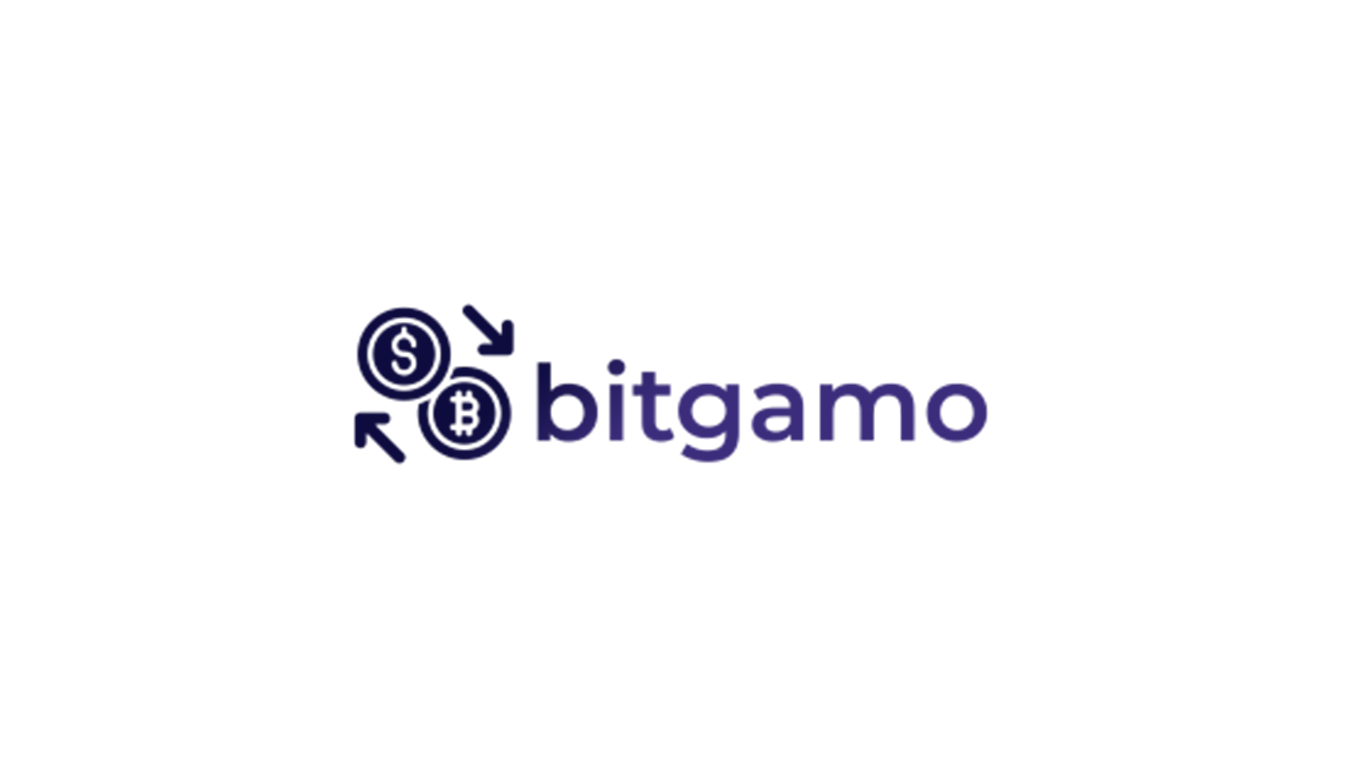
Bitgamo is quickly emerging as a sensation in the global crypto market by offering crypto to fiat exchange without any KYC or account registration. As the first crypto exchange to offer this highly useful benefit, the company is looking to popularize crypto in countries that are lagging behind in adopting digital currencies. Making things even more exciting, this rapidly growing crypto exchange offers higher price compared to the current market price.
Key Features of Bitgamo
• Best rate of exchange on the market
• No account registration is required
• No need to furnish documents such as passport, other identity proofs, proof of funds, etc.
• Instant transaction
Bitgamo is able to offer considerably higher exchange rates compared to others because it distributes the cryptocurrencies through multiple third-parties to the Middle East and other countries where obtaining or investing in cryptocurrencies is extremely difficult. As an accountless crypto exchanger, they offer the fastest, safest and most private alternative to convert crypto to USD. Users can complete transactions seamlessly and instantly with just one click.
Protecting the privacy of its customers is a high priority for Bitgamo. Unlike other similar services, the company doesn’t use any third-party web analytics, customer service software, marketing automation platforms and email marketing campaigns. As a proponent of decentralization, Bitgamo has set extremely high standards for protecting user data and privacy.
Related News
- 06:00 am

Sumsub, a full-cycle verification platform securing the whole user journey, is pleased to announce it has been featured as one of the Frost Radar™ leaders in a recent Fraud Detection and Prevention (Know Your Customer) report by Frost & Sullivan.
Initially, 80 KYC vendors were researched, and in the end, 8 of them, including Sumsub, made it to the Frost Radar™, showcasing their leadership and driving the entire industry forward with their innovative approaches. According to the report, Sumsub demonstrates immense potential as an end-to-end verification platform and is likely to experience significant growth in the next 1-1.5 years.
“Leveraging its footprint in Europe and APAC as a springboard, Sumsub is poised for a strong global presence as it focuses on North America and the Middle East for its next phase of growth. Sumsub’s comprehensive product portfolio that goes beyond identity verification to include business verification, transaction monitoring, case management, and fraud prevention indicates a visionary approach to solving client challenges globally,” says Deepali Sathe, Senior Industry Analyst, Cybersecurity, at Frost & Sullivan.
Sumsub has over 2000 customers in various verticals, such as fintech, gaming, trading, marketplaces, crypto, and mobility. In addition to offering digital onboarding and AML compliance solutions, the platform enables its clients to verify business customers with KYB (Know Your Business) checks, monitor transactions, and orchestrate the entire verification process with a fully customizable workflow. Sumsub platform leverages AI technologies to analyze and monitor extensive data, effectively identifying suspicious patterns and preventing even the most advanced fraud attempts. “The foundation of Sumsub's innovation strategy is to ensure the future relevance of its solutions in an evolving fraud environment. Insights based on tracking of thousands of behavioural signals, building complex models, and constantly updating features drive customer satisfaction,” adds Deepali Sathe.
“Growing our company in a highly competitive environment, we always focus on meeting all client needs, which implies constant innovation and customization of our product based on the most recent market and regulatory trends,” comments Jacob Sever, co-founder and Chief Innovation Officer at Sumsub. “Being recognized as a leader by Frost & Sullivan only strengthens our commitment to further enhance Sumsub’s offerings, grow global compliance expertise, and reinforce our position in the industry with new partnerships and ahead-of-the-market fraud prevention solutions.”
Related News
- 02:00 am
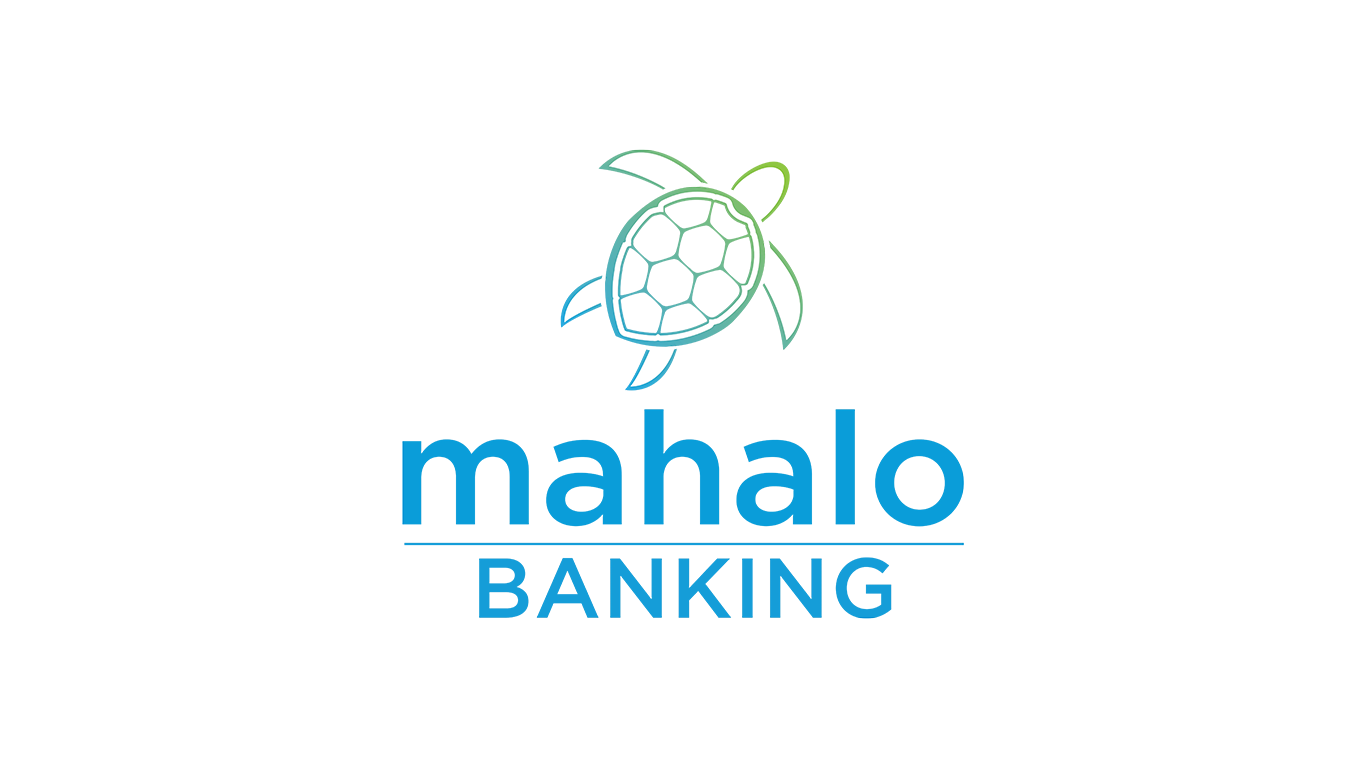
Milwaukie, Or.-based Providence Federal Credit Union (‘Providence FCU’ – $182M in assets) has partnered with Mahalo Banking, a premier online and mobile banking solution provider specifically designed for credit unions. Mahalo’s member-centric design, enhanced security functionality and forward-thinking innovation continue to propel credit union interest.
“Providing our members with the latest digital banking tools is one of our top priorities,” said Shirley Cate, President and CEO of Providence FCU. “We are excited to work with an innovative provider like Mahalo to redesign and redefine a better banking experience. Our team is confident that Mahalo offers the level of support we need to provide secure, convenient banking. They embrace our vision to create an impressive banking interface designed with seamless functionality that will enable our members to now address any financial need however and whenever they choose.”
Providence FCU will use Mahalo’s platform to reimagine its online and mobile banking experiences and create a more unified interface. Members will be able to easily navigate between the credit union’s digital channels and access identical features on either platform without disruption. New features being implemented include a live chat option that enables 24/7 assistance. The credit union will also deliver a new personal finance management tool that highlights opportunities for members to evaluate their spending habits and proactively improve their financial wellness.
“Providence FCU serves as the latest example of why so many credit unions are moving to Mahalo Banking. While working with their team, it was easy to see that member service is always a priority and implementing our Thoughtful Banking™ solution fits well in their pursuit to exceed all of their members’ needs,” said Denny Howell, co-founder and COO of Mahalo. “Our focus continues to be on designing an interface that enhances the overall digital experience with customized touches, ultimately enabling the credit union to always meet the changing needs of their membership base.”
Related News
- 03:00 am
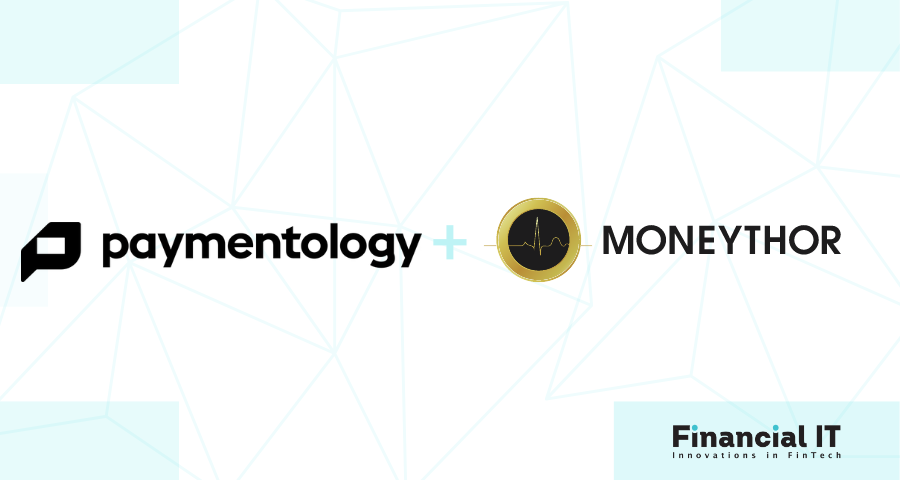
Paymentology, the leading global issuer-processor and Moneythor, the best-in-class provider of data-driven engagement solutions for financial institutions, today announced their partnership to bring actionable and event-driven experiences to digital banking customers leveraging Paymentology’s “Framework for Authorisation and Settlement Transmission” (FAST) interface.
This partnership brings together Paymentology’s rich, fast and deep data stream and Moneythor’s real-time data-driven recommendations, insights and nudges to deliver unparalleled customer experiences quickly and at scale.
By leveraging Paymentology's global payments platform alongside Moneythor's advanced personalisation and engagement engine, banks and their customers can benefit from more relevant personal finance assistance, as well as advanced money management and savings tools. The partnership will also allow banks to provide smart loyalty programmes, cashbacks, rewards and unique gamified experiences.
Paymentology’s fully in-cloud platform offers unmatched flexibility, data-richness, and secure APIs, which allow for smooth integration and the swift design and deployment of customised programs. FAST Message provides over 120 transaction details, in a rich, layered, easily interpretable, real-time feed. This allows banks to deliver advanced use cases to help their customers manage their finances better while strengthening the bank-customer relationship
thanks to data-driven and personalised loyalty programmes.
Moneythor’s best-in-class system of engagement for financial services is powered by real-time data analytics and behavioural science. The Moneythor solution delivers unmatched, data-driven and personalised experiences to customers across all digital banking channels. Examples of these include money management nudges, budgets, savings goals, predictive forecasts, financial literacy material, relevant offers, loyalty programs and more.
Emre Durusut, Regional Director for APAC at Paymentology, commented: "We are at the forefront of meeting, and exceeding, the demands of digital banking clients who expect instant insights about their financial activities and health. By combining Paymentology’s FAST feed technology with Moneythor’s personalised system of engagement, we now offer an unparalleled user-friendly experience. The powerful combination of the two companies is enriched by in-depth financial data that banks can readily share with their individual and corporate customers. We take great pride in this partnership as we embark on our first common use cases, setting the bar high for the future of next-generation banking."
Olivier Berthier, CEO, Moneythor, added “Paymentology are the best-in-class processing platform for digital banks. By partnering with them we will be able to tap into their rich and meaningful data streams to deliver our actionable insights, recommendations, and nudges to customers when and where it matters most.”









